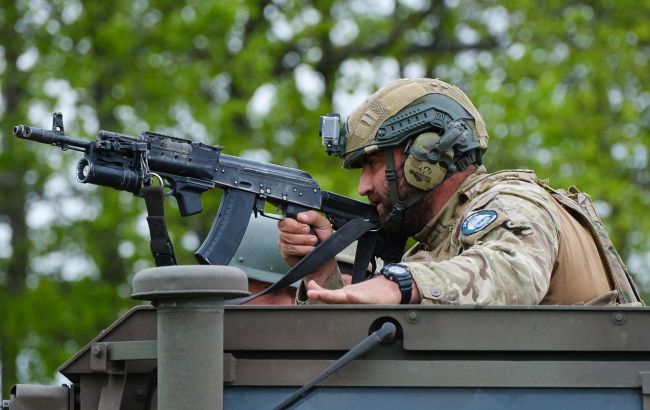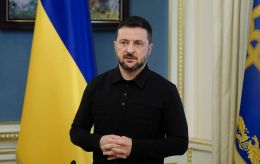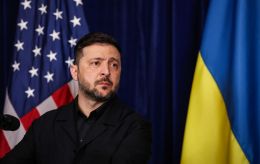Russian forces degrade, any Ukrainian Armed Forces' breakthrough could be decisive - ISW
 Ukrainian military (Vitalii Nosach, RBC-Ukraine)
Ukrainian military (Vitalii Nosach, RBC-Ukraine)
The counteroffensive actions of the Ukrainian Armed Forces are forcing Russian occupiers to redeploy their defending forces in the western part of the Zaporizhzhia region, where Ukrainian soldiers have weakened their defenses. This degradation of Russian military strength presents an opportunity for a breakthrough by the Ukrainian Armed Forces, which could prove decisive.
Such conclusions have been drawn by analysts at the Institute for the Study of War.
According to experts, the likely lateral redeployment of Russian troops suggest that Ukrainian counteroffensive operations have significantly degraded the existing defensive forces of the Russian Armed Forces in the Zaporizhzhia region, where Ukrainian forces have achieved tactical successes.
These developments have compelled the Russian command to divert these reinforcement elements to strengthen their defense in this critical sector of the front line.
The absence of operational reserves among the Russians implies that the leadership of the Russian Armed Forces will need to conduct more lateral redeployments if they intend to reinforce specific sectors of the front line in the future.
ISW notes that the Russian occupiers' practice of conducting lateral redeployments to key sectors of the Ukrainian front line could further degrade their overall defensive positions.
Russia’s practice of conducting lateral redeployments to key sectors of the front will likely further weaken Russian defensive lines in aggregate, as both Russian and Ukrainian operations are fixing Russian units to certain sectors of the front. These lateral reinforcements will likely disrupt Russian offensive and defensive operations in the sectors from which they are drawn and threaten to rapidly degrade the forces that the Russian military is using as reinforcements, as stated in the report.
The Institute for the Study of War points out that Russia currently does not appear to possess significant available forces that it could draw on for reinforcements without endangering other sectors of the front.
Ukrainian counteroffensive operations drew elite Russian formations and units to the Bakhmut area and continue to fix them there. Russian forces have also committed a significant number of forces to localized offensives operations in the Kupyansk and Svatove areas, which aim to similarly draw Ukrainian forces away from areas of Ukrainian counteroffensive operations.
"Even if the Russian command determines to end localized offensive pushes in these areas it would likely take some time for Russian forces to lower the tempo of their operations and withdraw forces for lateral redeployments without opening up areas of the front to successful Ukrainian counterattacks," the report says.
Meanwhile, Ukrainian forces maintain reserves that allow them to rotate units instead of relying on redeploying units conducting defensive and offensive operations to other sectors of the line without rest.
Thus, Ukrainian forces likely therefore can maintain the necessary combat potential needed to continue degrading Russian forces defending southern Ukraine and the Bakhmut area while constraining Russian advances along the Kupyansk-Svatove-Kreminna line, according to ISW experts.
"Russian lateral redeployments will likely increase the likelihood that Russian forces would have to fall back to prepared defensive positions without significant support in the case of a Ukrainian breakthrough. Therefore, the further degradation of defending Russian forces thus creates opportunities for any Ukrainian breakthrough to be potentially decisive," the report states.
Key takeaways:
- On August 11, the Ukrainian Armed Forces achieved tactically significant advances in the western Zaporizhzhia region and approached the outskirts of Robotyne amid ongoing counteroffensive operations on at least three fronts.
- Russian forces seem to be intensifying offensive operations northeast of Kupiansk, which could divert Ukrainian forces from strategically important parts of the front in operational terms.
- On August 11, Russia launched another series of missile strikes on Ukrainian territory, marking the second such attack in the past week on an airfield.
- Russian sources claimed that the Wagner Group appears to be maintaining a presence at its facilities in Belarus, though the status of its rumored withdrawal to Russian remains unclear.
- The Russian Ministry of Internal Affairs (MVD) is struggling with significant personnel shortages, especially in occupied territories in Ukraine, amid a broader power shift between other Russian internal security organs.
- The Kremlin and the Russian Ministry of Defense appear to be attempting to shift blame for Ukrainian shelling in border regions of Russia onto mid-level officers.
- On August 11, Russian forces conducted offensive actions along the Kupiansk-Svatove-Kremenna line, near Bahmut, along the Avdiivka-Donetsk line, and in specific areas of Donetsk and Zaporizhzhia regions, achieving advances in some sectors.
- On August 11, the Ukrainian Armed Forces conducted offensive actions on at least three fronts and advanced in the western border areas of Donetsk region, as well as in the eastern and western parts of Zaporizhzhia region.
- The Russian defense-industrial base has begun producing Geran-2 drones, a modified version of the Iranian Shahed-131/136 drone, which is likely to allow Russia to maintain or potentially increase the frequency of drone strikes against Ukraine.
- The Russian occupation "government" is taking steps to present future regional "elections" in occupied Ukrainian territories as fair and competitive.
Frontline situation
According to the General Staff, the Ukrainian Defense Forces continue to advance in the Melitopol and Berdiansk directions, consolidate their achieved positions, and undertake counter-battery actions.
At the same time, as previously reported by the Institute for the Study of War, the Ukrainian Armed Forces are attempting to secure positions near Urozhaine, while the Russians remain actively engaged in attacks on the Kupiansk direction.

